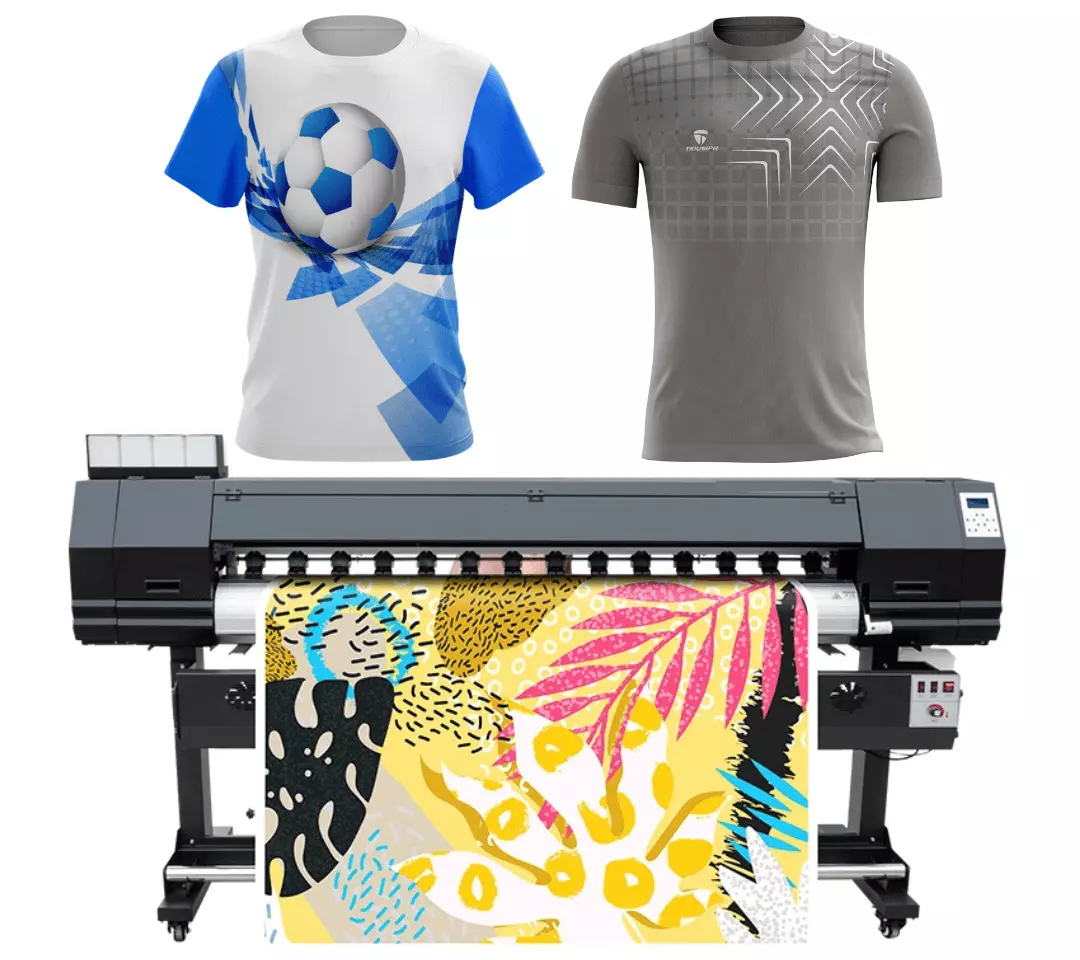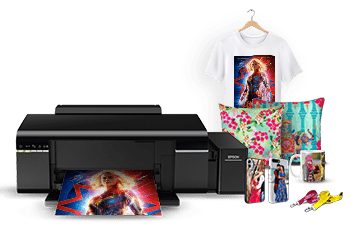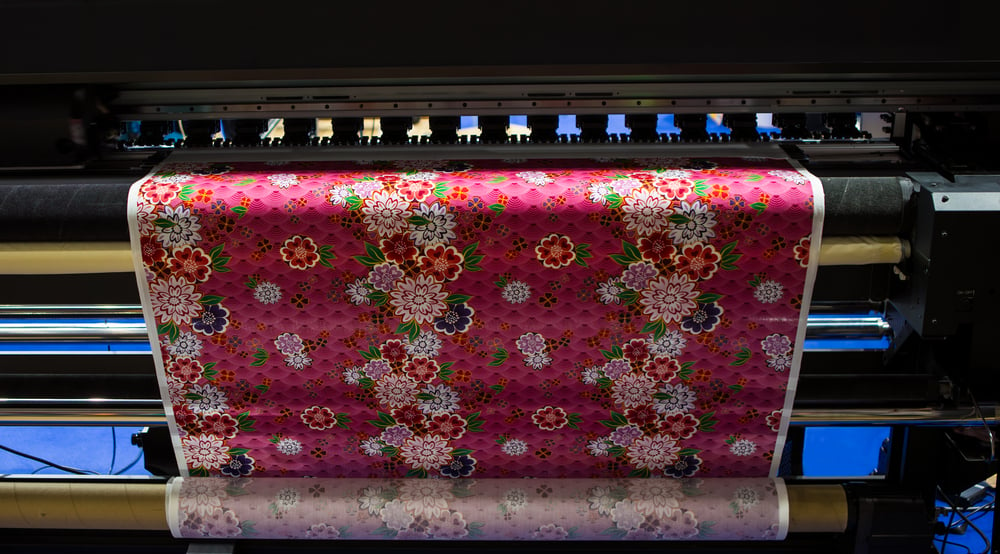How Screen Printing Revolutionizes the Branded Clothing Industry
How Screen Printing Revolutionizes the Branded Clothing Industry
Blog Article
The Surge of DTF Printing: Exploring Its Benefits and Applications
The introduction of Direct to Film (DTF) printing modern technology is reinventing the customized apparel sector, supplying notable benefits and a large array of applications. As the cravings for customized items proceeds to expand, recognizing exactly how DTF printing can meet these evolving demands is progressively essential.

Recognizing DTF Printing Innovation
Comprehending DTF Printing Technology notes a considerable innovation in the fabric printing sector, especially for its flexibility and efficiency. Direct-to-Film (DTF) printing is an advanced process that involves printing designs onto special transfer movies, which are after that transferred onto material making use of warm and pressure. Unlike typical methods, DTF printing does not need pre-treatment of the textile, enabling a more streamlined process.

Once healed, the movie is positioned onto the textile, and a warm press transfers the style by using constant warm and pressure. This leads to dynamic, high-grade prints that stick flawlessly to numerous textile kinds, consisting of cotton, polyester, and blends (Branded clothing). The technology's capability to produce elaborate and vivid layouts with marginal configuration makes it a game-changer in the textile printing sector
Trick Advantages of DTF Printing
One of the key advantages of DTF printing is its exceptional convenience, which permits top quality prints on a wide variety of fabric kinds. This capacity prolongs beyond typical cotton to consist of polyester, nylon, leather, and also combined materials, making it perfect for diverse fabric applications. This versatility minimizes the demand for multiple printing modern technologies, improving production procedures and minimizing overall prices.
An additional significant advantage is the superior print quality that DTF modern technology provides. By using vibrant, long lasting inks and specific application approaches, DTF prints maintain their shade fidelity and sharpness also after various washes. This results in a product that not just looks specialist however additionally stands the test of time, supplying regular value to both end-users and suppliers.
Moreover, DTF printing uses a streamlined operations, which can lead to enhanced effectiveness and performance. Unlike traditional methods such as screen printing, DTF does not need intricate arrangement or extensive drying times. This simplicity of use makes it an eye-catching alternative for businesses of all sizes, enabling for quicker turnaround times and the ability to deal with little to big manufacturing keeps up marginal headache.
Applications in Custom Apparel
In the world of custom-made clothing, DTF printing stands apart as a game-changing technology that makes it possible for developers and makers to produce bespoke apparel with unrivaled detail and top quality. Direct-to-film (DTF) printing has actually reinvented the customized apparel sector by using flexibility in layout, dazzling color reproduction, and durability. This ingenious method enables complex designs to be moved onto a broad selection of materials without compromising the honesty of the material.
One significant view website application of DTF printing remains in creating custom tees, hoodies, and sportswear. The capacity to print intricate graphics with fine details and slopes makes it ideal for personalized apparel, such as group uniforms and promotional merchandise. Moreover, DTF printing is particularly useful for one-off pieces and limited-run orders, providing a efficient and economical remedy compared to traditional display printing methods.
Furthermore, DTF printing has actually opened up brand-new opportunities for stylist to experiment with distinct patterns and appearances, enabling the creation of cutting-edge, avant-garde collections. This technology likewise sustains local business and independent artists by decreasing the obstacles to access in the custom-made clothing market. Ultimately, DTF printing is reshaping the landscape of personalized garments, merging artistic expression with technical advancement.
Convenience Throughout Different Products
Building on the advancements in custom garments, DTF printing's convenience throughout various materials better improves its appeal. Unlike typical printing techniques, DTF (Direct-to-Film) printing can be applied to an extensive array of substratums, including cotton, polyester, blends, natural leather, and also hard surface areas like wood and glass.
The ability to publish on varied materials opens up countless opportunities for services across different markets. In the advertising products industry, business can personalize a wide array of things, from carry bags and caps to cups and phone cases, all with the exact same printing technology. In the garment industry, DTF printing makes it possible for developers to try out intricate patterns and vivid shades on non-traditional textiles, pushing the borders of creativity.
Moreover, DTF printing's compatibility with different products also equates to cost-efficiency and decreased waste, as manufacturers can use the same equipment for several applications. This convenience not just broadens the scope of product offerings however additionally enhances operational effectiveness.
Future Leads of DTF Printing
As the marketplace evolves, the future prospects of DTF printing are poised to transform different markets via continual development and technological innovations. The rise in need for tailored apparel and marketing items is driving the need for more efficient, flexible, and economical printing approaches. DTF printing, with its ability to visite site generate top quality, durable prints on a broad range of products, stands at the forefront of this change.
Arising trends show that DTF printing will significantly incorporate with automation and AI innovations, improving production speed and lowering labor prices. Advanced software program options will certainly further maximize style accuracy, shade matching, and print uniformity, dealing with some of the existing restrictions. Additionally, environmentally friendly inks and recyclable transfer films are anticipated to acquire traction, straightening with worldwide sustainability goals.
As research study and advancement initiatives continue to expand, the extent of DTF printing will likely expand, opening up new methods for industrial and imaginative applications. In summary, the future of DTF printing is intense, appealing substantial improvements and broader sector fostering.
Verdict

Comprehending DTF Printing Innovation marks a considerable development in the textile printing industry, particularly for its flexibility and effectiveness. Direct-to-Film (DTF) printing is a sophisticated process that includes printing layouts onto unique transfer films, which are then transferred onto material making use investigate this site of warmth and stress. DTF printing is specifically advantageous for limited-run orders and one-off pieces, supplying a effective and cost-efficient solution compared to traditional screen printing approaches.
Unlike standard printing methods, DTF (Direct-to-Film) printing can be used to an extensive array of substrates, consisting of cotton, polyester, blends, natural leather, and even tough surfaces like timber and glass.DTF printing innovation is transforming the custom garments market by providing reliable, economical, and flexible solutions for creating vibrant designs on numerous materials without pre-treatment.
Report this page